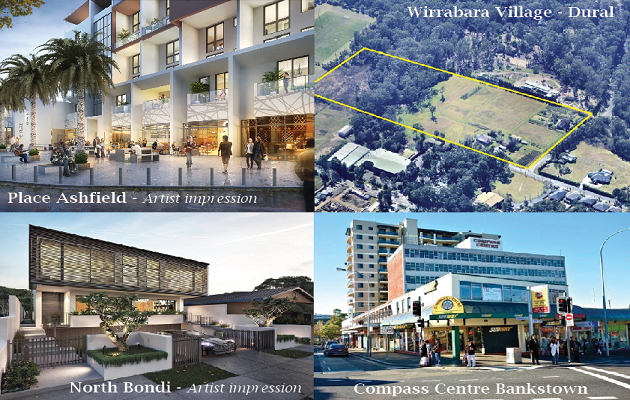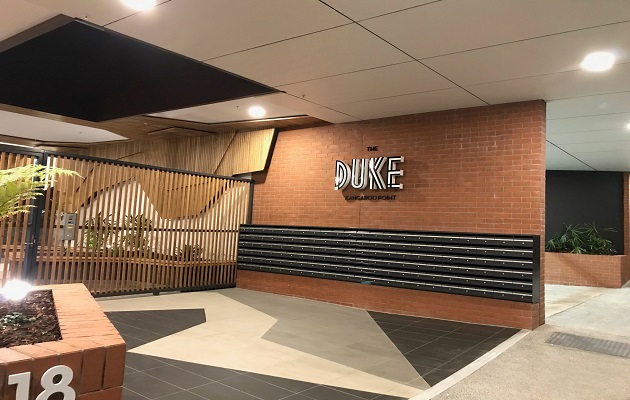Non-bank lenders are diversifying beyond their core developer customers to accommodate additional and alternate borrowers in industries such as pubs and self-storage.

Borrower demand in these sectors is higher than the availability of conventional finance, and the demand also outweighs the willingness of banks to lend in today’s credit environment.
It’s now common practice to read about how non bank lenders are funding projects in the residential or commercial space. Especially when lenders like White & Partners can offer more lenient and flexible covenants and lend more than a traditional bank.
More recently though White & Partners has been lending to new niches of borrowers including self-storage and pub/hotel projects. This is in addition to the Chinese developers with projects in key growth suburbs. In a number of cases, the banking covenants and/or the lending criteria are simply proving too inflexible for these borrowers.
A recent example of this is a $25 million first mortgage construction loan which has been extended to a pub expansion project in Peakhurst through White & Partners. The Project involves the refurbishment and expansion of the property into a modern hospitality venue comprising food, bar and gaming. The overall LVR was sub 60% with a proven and well established operator.
The banks didn’t like the trade up risk, which given White & Partners experience in the sector, was something we were comfortable with.
While White & Partners (and others) has traditionally focussed on land banks, development and investment loans, these more alternative opportunities through sub-sectors are now becoming more common. Many publicans, in particular, have sought term sheets to refinance away from their mainstream lenders due to restrictive covenants.
Industry intelligence is key in our diversification; investing in understanding the nuances and machinations of sub-industries and businesses in alternative sectors to responsibly lend. Our core business at White & Partners is investing, owning and operating assets across the property spectrum, as a result it’s unlikely that we’ll encounter any first mortgage opportunity in the property space we won’t understand.
In the non-bank lending space, it’s commonplace in the negotiation of loan contract terms for the borrower to focus first on negotiating down the interest rate, and then on negotiating down the length of the minimum term.

Our observation is that it’s surprising that minimum terms lengths are the borrower’s second most salient negotiation points when, in practice, borrowers almost always seek an extension to their loan repayment term.
Borrowers and their non-bank lenders like White & Partners will spend a significant portion of the contract negotiations deliberating on minimum terms; the period within which the borrower cannot repay the loan which ensures the lender gets a minimum return.
Yet, our experience shows that this is a moot negotiation. A waste of energy, you might say. The borrower, optimistic in their intention to repay in a short timeframe, will aim to reduce their minimum term. Inevitably, hurdles from construction through to credit availability, and legislative factors such as changes in foreign investor rules end up hindering this quick repayment ambition, and more often than not the borrower will seek an extension, or refinance. Either way, the borrower invariably ends up paying the minimum term.
Whilst it’s human nature to seek the cheapest, quickest way out of the facility by negotiating a shorter minimum term, the focus should be on the long term loan deal, given the odds are that the loan term will be extended.
In December 2017, White & Partners settled over $80 million in first mortgage land and construction loans across four projects in Sydney.

In December 2017, White & Partners settled over $80 million in first mortgage land and construction loans across four projects in Sydney. Whilst the four projects varied in nature, risk profile and delivery status, we believe they shared common fundamentals of being well located properties with significant underlying value being undertaken by experienced sponsors.
Located across Sydney, the projects ranged from a mixed use apartment development in Ashfield, luxury duplex development in North Bondi, shopping centre in Bankstown and a land bank designated for retirement living in Dural. A brief overview of the projects is provided below.
The Place, Ashfield (18 Month Land and Construction Facility, LVR 72%)
- Funding designated for the development of a 8 storey mixed use project comprising 91 residential dwellings and 7 retail lots, located 300 metres from the railway station
- Project is largely pre-sold
- Construction is underway, with in ground works completed at the time of loan origination
Compass Centre, Bankstown (12 Month Bridging Loan LVR 33%)
- Bridging loan for refinancing of a shopping centre situated on 8,173 sqm adjacent to the Bankstown train station
- Development Application (DA) has been lodged for 471 apartments, 5,020 sqm of retail, 2,034 sqm of commercial and 794 carparks
Wirrabara Village, Dural (12 Month Land Facility LVR 82%)
- 15.63 acres of land across three 5 acre titles within close proximity to Dural town centre
- Developer is pursuing a DA for a retirement living community comprising 37 Villas, 80 Apartments and a 72 bed aged care facility
North Bondi (14 Month Land and Construction Facility LVR 82%)
- Funding designated for the acquisition of property and development of luxury duplex development in the eastern suburb of North Bondi
With major banks lending more than 80% of all commercial real estate (CRE) debt in Australia (pre GFC, it was ~60%), we are not surprised that banks are tightening CRE lending to reduce concentration levels. Experienced developers with strong balance sheets that would have otherwise received funding a year earlier are increasingly being forced outside the regular banking system. The loans above also indicate that banks are not discriminating between property location, project scale, asset classes and developer profiles.
The current environment has opened up opportunities for private first mortgage lending at rates traditionally associated with the mezzanine space. However, it will be interesting to see how long the current window lasts, especially with the major banks due to receive repayments from the 230,000 apartments penned for completion in 2018. At White and Partners, our focus has always been to lend with a view of building long term relationships with both investors and developers, rather than isolated transactions.
White & Partners 10 month construction loan to a trust managed by a subsidiary of Blue Sky (ASX:BLA) for the development of the Duke Apartment Project in Brisbane was repaid on schedule in October 2017.

White & Partners 10 month construction loan to a trust managed by a subsidiary of Blue Sky (ASX:BLA) for the development of the Duke Apartment Project in Brisbane was repaid on schedule in October 2017.
Representing White and Partner’s first senior lending deal, the loan facility was ~$37 million and had a 10 month term. Investors were returned a net cash multiple on committed funds of 1.09x money.
The Duke now sits as a 15 storey, 125 apartment complex in the inner-Brisbane suburb of Kangaroo Point. Despite highly publicised concerns on apartment settlement rates in Brisbane, the majority of buyers in the Duke were able to obtain finance and settle.
The Duke loan highlights the opportunity to provide attractive risk-adjusted first mortgage investment opportunities on high quality projects:
- The developer was a subsidiary of an ASX listed fund manager with a proven track record in residential project development in Brisbane;
- Construction was well advanced at settlement of the loan, with the level 14 slab completed and fit-out of the building underway;
- 58 apartments or 65% of the loan was pre-sold at settlement of the loan, with the loan 100% covered 5 months later by July 2017; and
- Funding was lent on the basis of a conservative loan to value ratio of ~63%
2018 will continue to be test for Brisbane, with over 14,000 apartments due for completion. Our Ray White data, which represents 14% of the market, show stability with both prices and sales volumes in 2017 in line with 2016 levels.
White & Partners Debt Management (WPDM) has closed its first fund, a 10-month first mortgage construction loan for Blue Sky’s Duke Apartment Project in the inner-Brisbane suburb of Kangaroo Point.

White & Partners Debt Management (WPDM) has closed its first fund, a 10-month first mortgage construction loan for Blue Sky’s Duke Apartment Project in the inner-Brisbane suburb of Kangaroo Point. The total investment was approximately $37m and is expected to deliver investors a net IRR in excess of 14%.
The project involves the development of a 15 storey, 125 apartment tower complex. The site is across the road from the Gabba cricket and AFL ground and features a rooftop pool and terrace overlooking the stadium. The development is close to the CBD and is well serviced by the retail and restaurant precinct at the Stanley Street end of the Gabba.
The investment highlights the difficulty facing developers securing debt funding for high quality projects:
- Blue Sky is an ASX listed fund manager with a proven track record in residential project development in Brisbane;
- Construction was already well advanced at settlement of the loan, with the level 14 slab completed and fit-out of the building underway;
- Only 1 of the 58 pre-sales is to an offshore buyer that required FIRB approval.
The main impediment to securing bank funding was that pre-sales cover was less than 100%. White & Partners Debt Management has mitigated this risk by requiring 100% loan cover by July 2017 and adopting a conservative loan to value ratio.
White & Partners Debt Management is currently reviewing a strong pipeline of similar investment opportunities as a result of the continued withdrawal of the major banks from the development funding space.
Australian property values have risen strongly over the past two to three years, fueled by a combination for factors including low interest rates, equity market volatility, Australia’s reputation �as a ‘safe’ jurisdiction and investors seeking yield.

Australian property values have risen strongly over the past two to three years, fueled by a combination of factors including low interest rates, equity market volatility, Australia’s reputation as a ‘safe’ jurisdiction and investors seeking yield. As concerns grow that valuations are due for a correction, a more defensive way for investors to allocate capital to the property sector is through first mortgage lending.
First mortgage lending, at sensible Loan-to-Valuation Ratios (LVR) and secured against quality real estate, provides a significant cushion in the event that property values fall. The legal framework in Australia ensures that first mortgage lenders are in a strong position to take appropriate action to protect the value of their investments.
Various Australian and international studies have shown that returns on first mortgage lending have a low correlation with other asset classes (ie equities, bonds, etc), further enhancing its defensive properties.
The exciting opportunity for investors is that, given the current state of the banking market in Australia, first mortgage lending is able to deliver attractive returns in addition to these defensive properties.
Simon Tozer
CEO – Debt Management
A global push by regulators for banks �to hold higher amounts of capital, and locally a residential investment and construction boom fuelling strong loan growth and therefore further supporting capital required.

The Australian banks are rationing the provision of debt to the property sector for logical reasons. They include a global push by regulators for banks to hold higher amounts of capital, and locally a residential investment and construction boom fuelling strong loan growth and therefore further supporting capital required. Furthermore, they are wary of the risk of deteriorating creditworthiness of borrowers which comes beyond the low point of the interest rate cycle, high property prices and increased supply. There are also changing and unclear capital export rules for foreign investors.
In the background, banks are striving to maintain high dividend payouts to their shareholders.
The capital allocation models used by banks and endorsed by regulators include capital penalties for loans reported as irregular in some way. This helps explain why they are rejecting projects where there is any risk of irregularity, notwithstanding that the ultimate recoupment of principal and interest appears very likely.
We therefore feel there are sensible opportunities for investors who understand property fundamentals, and who are not bound by banking regulation to replace the banks in filling the funding gap left by bank rationing.
Stephen Girdis
Chairman of the Debt Management Investment Committee







